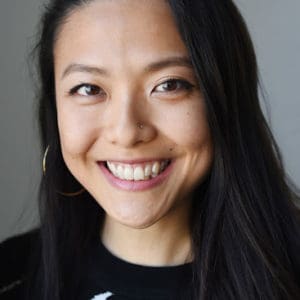Visual mediums like television, movies, and photography, have too often fallen short of meaningful representation. However, body positivity is turning a corner in the media and fashion industry; authenticity in LGBTQ+ imagery is becoming vital to creating truly representative images, and Black representation in visual media is on the minds of businesses and individuals now more than ever.
Shutterstock’s recent diversity report saw 22% of advertisers have started to use more racially diverse visuals in their campaigns*. The study asked 501 UK marketers why they have started to use more diverse visuals in their digital advertising; 55% stated that the change was aligned with wanting to represent modern-day society. It is now a given that we should be diverse and inclusive with the imagery we are using in marketing campaigns.
Accurate representation
By failing to portray diverse representation accurately and with meaning, the media industry advances stereotypes that do harm to Black culture and impact how people see themselves: “We cannot be, what we cannot see.” We need to lay the groundwork now for more diverse processes to encourage fairness across the board, only then can we begin to accelerate change and ensure true diverse representation in media.
More specifically brands are failing to represent Black women in ads. According to a study from the Geena Davis Institute on Gender in Media and Cannes Lions based on analysis of 251 ads, Black females rarely appear, with 69% of the Black representation being male. This raises the important point that we don’t just need Black representation – we need great Black representation.
Authentic representation
Diversity in digital advertising shouldn’t be a box-ticking exercise, it is essential to always think about the quality and relevance of a resource before using it. If your objective is to be seen as diverse, your work will reflect this artificial perspective. If your objective is to actually be diverse, portray each story authentically by truly educating yourself. A study has shown more than half of consumers think less than half of brands create content that resonates as authentic. In a recent interview photographer Carlos David discussed the need to be vigilant with the visuals we are using in our advertising, detailing even when a visual seems to meet the ‘diverse’ criteria, it can often appear cliched, stereotyped or forced.
The importance of authenticity and a brands connection with its audience has been accentuated over the last months. Consumers now more than ever are demanding real genuine content, with 86% saying authenticity influences whether they like and support a brand. Videographer Iain Campbell recently spoke about how he listens and speaks to each person he films to truly portray through his work how diverse life is. His visuals being the perfect example of the value of authenticity, with his insistence that his models must be the relatable people that surround us.
Appropriate resources
Further findings from our diversity report saw a quarter of marketers say that custom shoots are too expensive and 40% agree that they struggle to source relevant resources for their marketing campaigns. It is vital brands and marketers are aware of the resources at their disposal – tools such as free image packs for Black representation within stock libraries can streamline obtaining diverse and inclusive content for digital advertising. This also begins and ends with being educated in what the correct resources are and how and when to use them—putting in the work to understand how to be truly inclusive in marketing and become better allies.
Representation across the board
Recognising the individuals behind the creative is equally as important as championing Black creatives throughout the industry. Graphic designer and art director Ahmed Abokor recently spoke about his experience as a Black man in the creative industry, starting off in digital advertising and then moving into the world of experiential design. He detailed his experiences of often being the only Black creative on most projects. Sharing that the imbalance is not impossible to fix and the power of great representation cannot be underestimated.
Making a change
The production and advertising industries are striving to make up for their long history of failings when it comes to diversity and inclusion in front of and behind the creative. As these industries begin to build bridges, Shutterstock is striving to also make a difference, partnering with a selection of non-profit organisations that positively impact the Black community and other minority groups, providing them with free resources and access to the visual content they need to tell their stories. Additionally, over 100 Black creatives and allies in the filmmaking and advertising communities have teamed up to create the Black Filmmakers Collective to launch “Change the Lens,” a new pledge to increase the number of Black professionals at all levels within the creative industry.
Brands and advertisers need to continue to educate themselves and use accurate quality resources in their campaigns, in order to continue to accelerate change and ensure authentic representation in media. Last year’s ban on harmful gender stereotypes in ads by The Advertising Standards Authority means this is now no longer an option for our industry.

